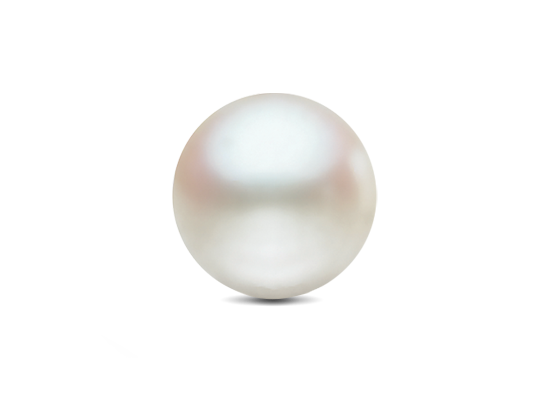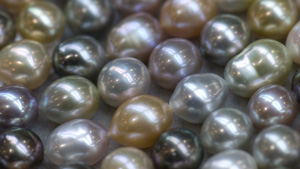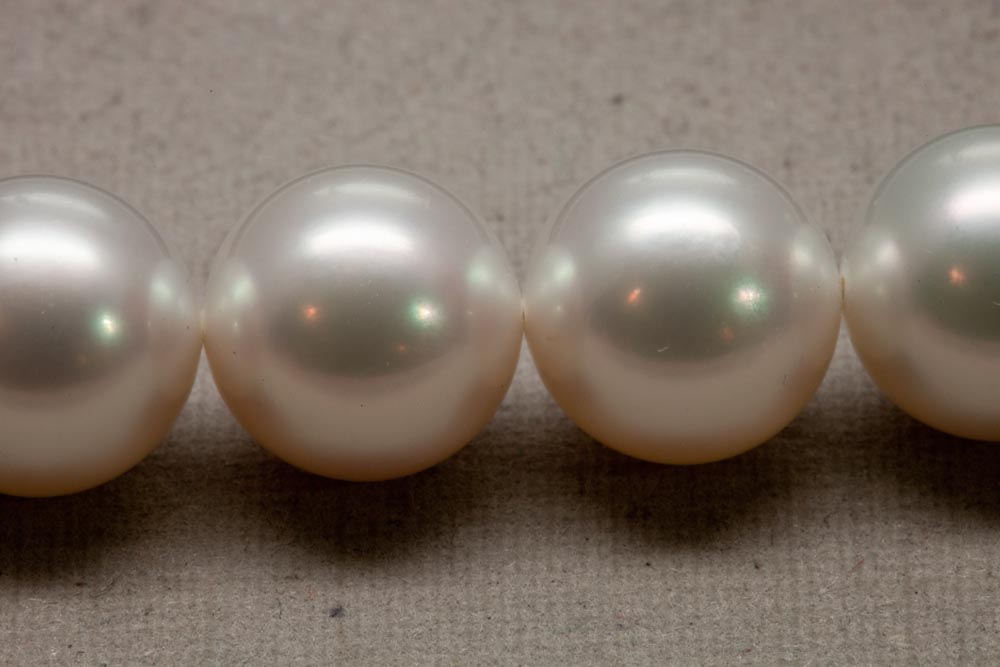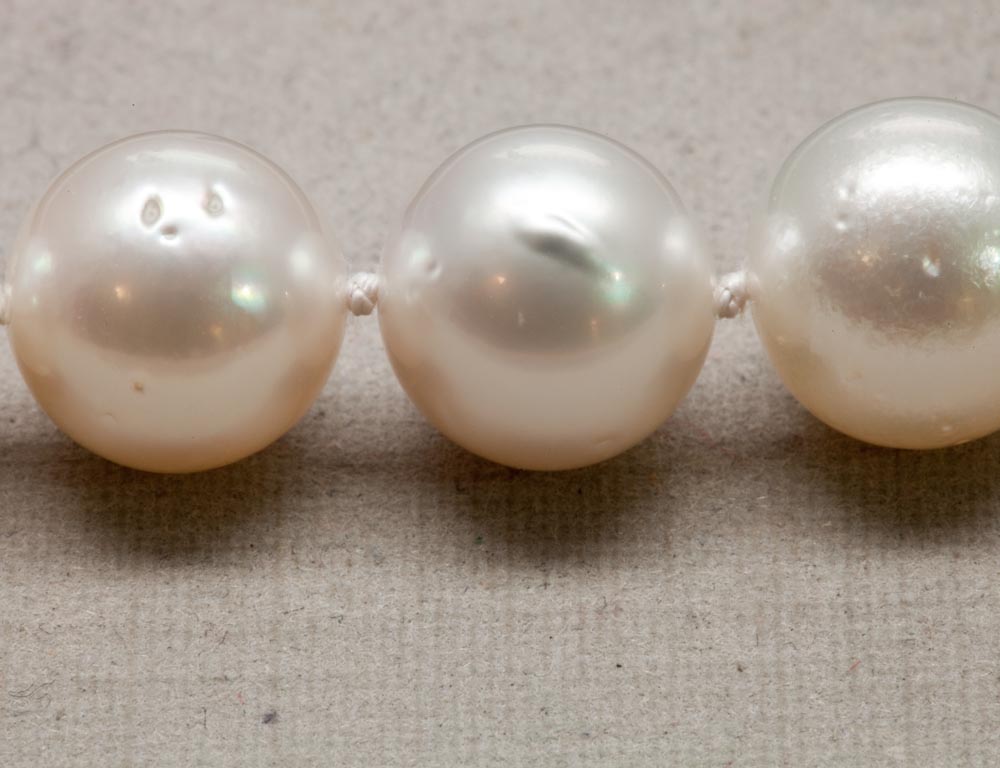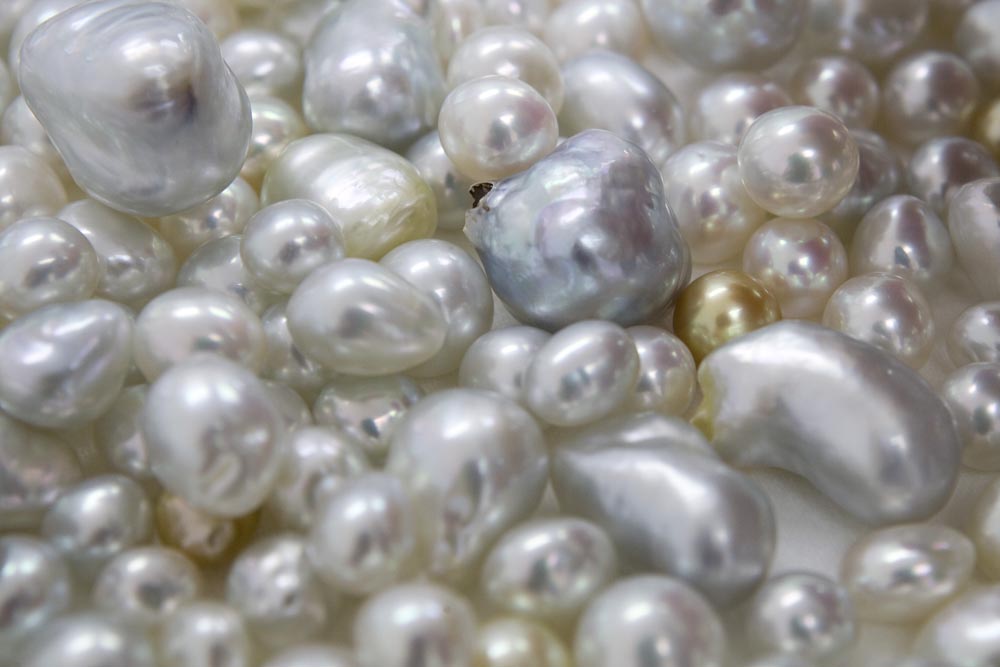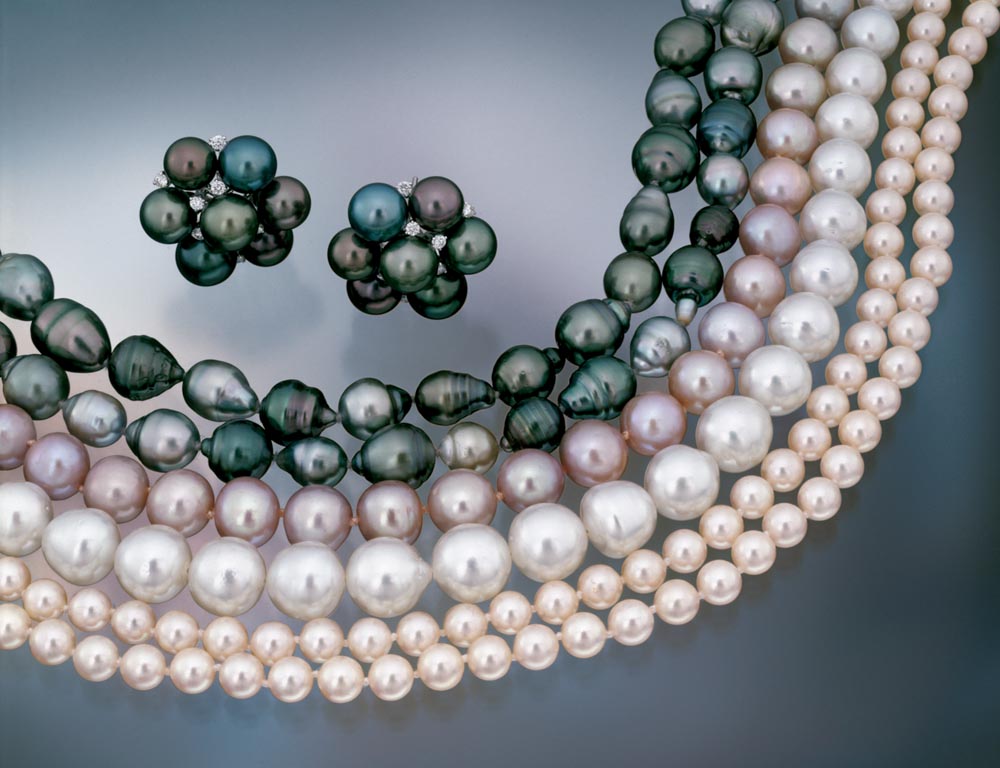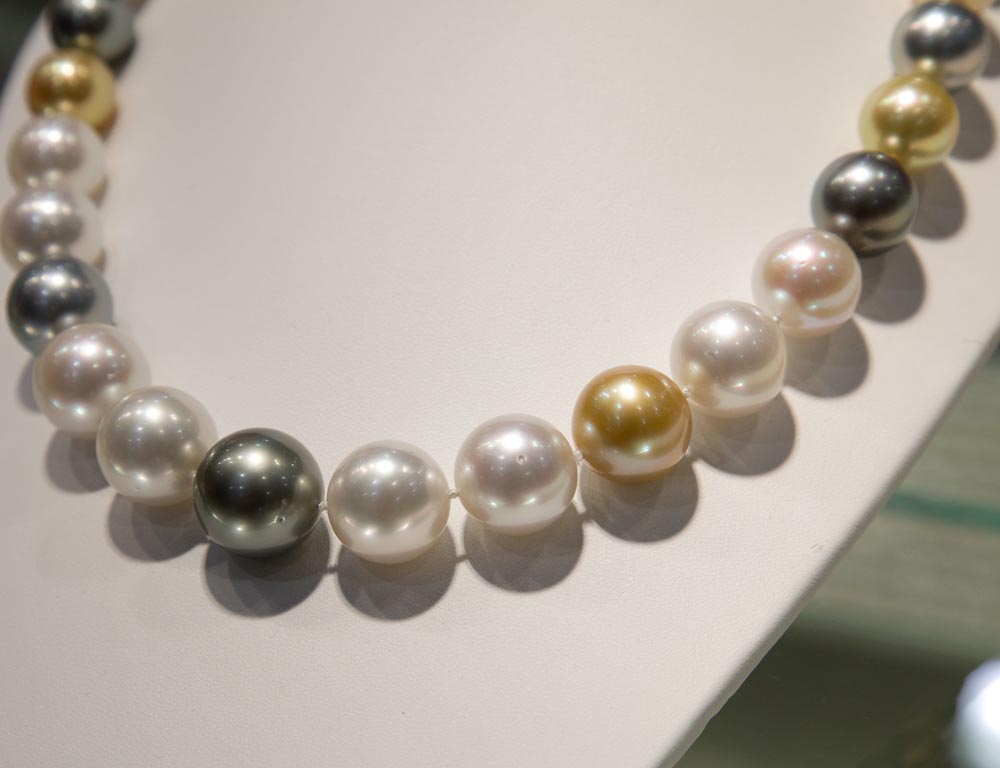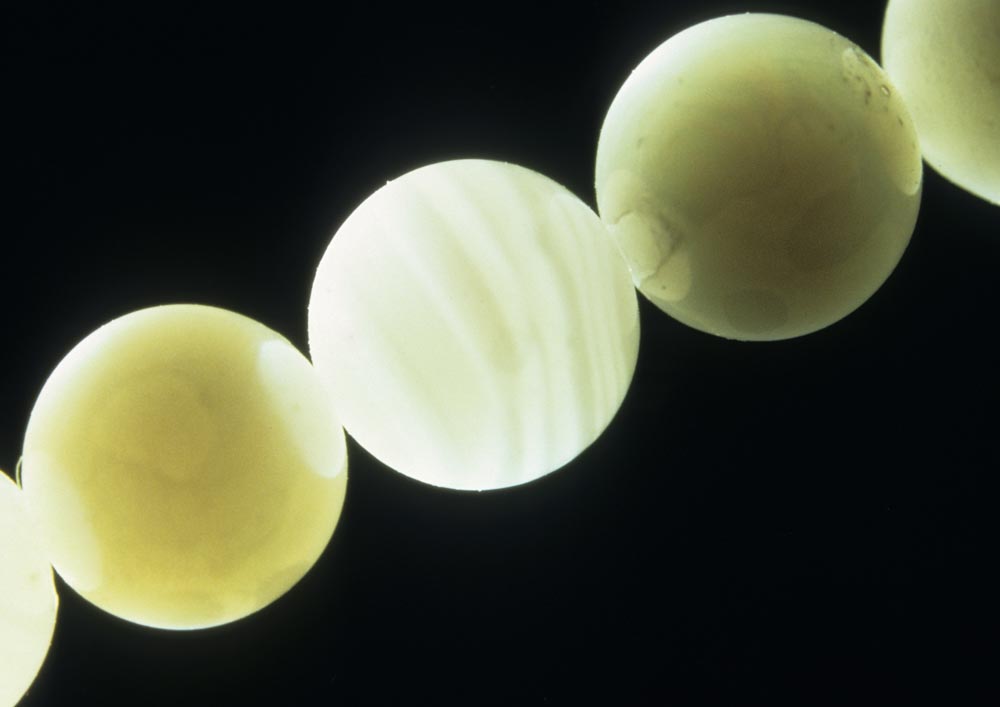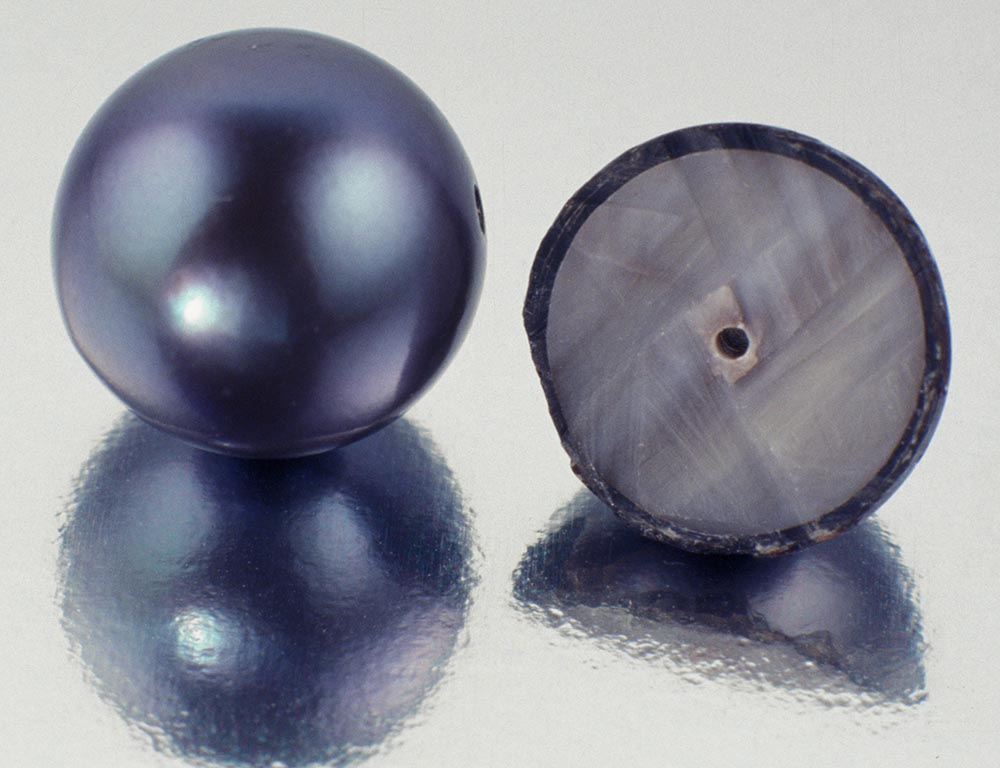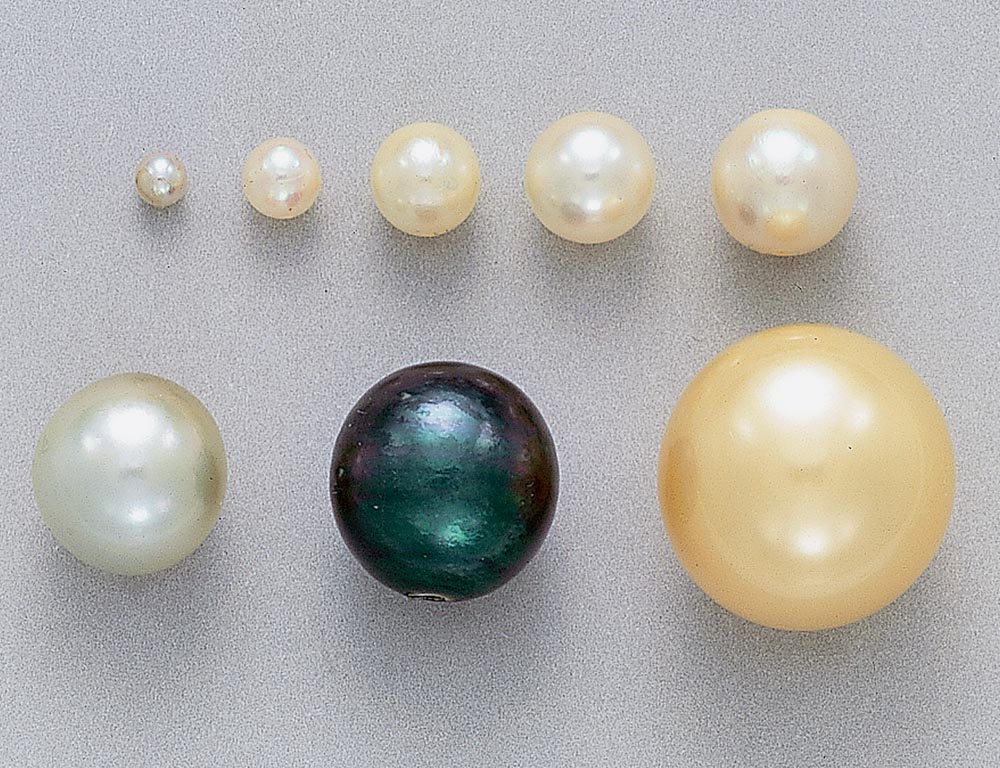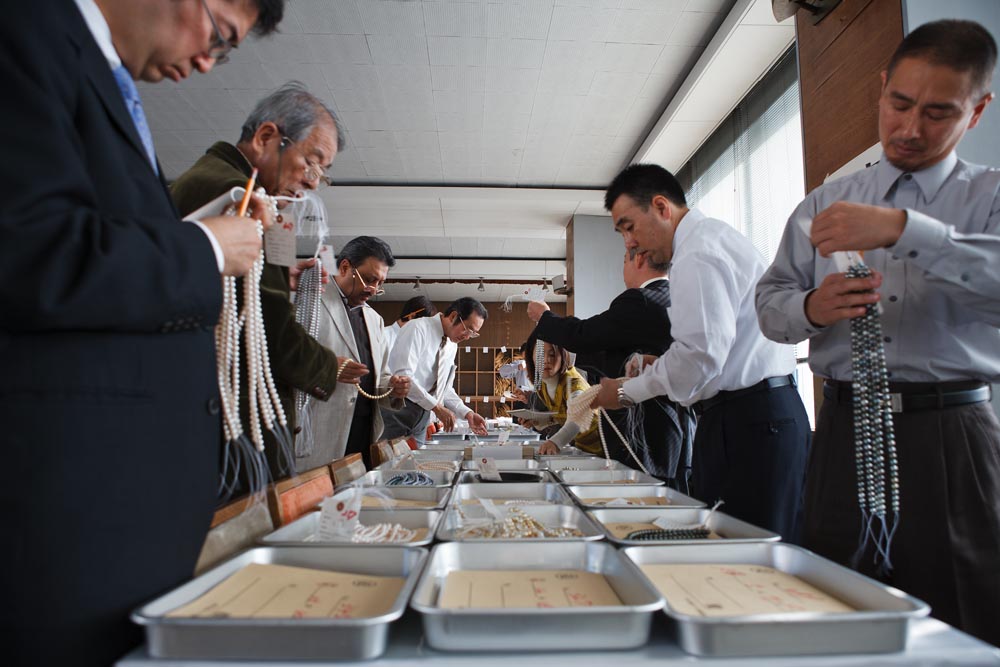Buyer's Guide
The qualities that determine a natural or cultured pearl’s value are size, shape, color, luster, surface quality, nacre quality, and—for jewelry with two or more pearls—matching.
FIND A JEWELER
Use your zip code to find a jeweler near you with GIA reports and GIA-trained staff.
FIND A REPORT
Verify the information on your report matches what is archived in the GIA report database.
What To Look For
If surface characteristics are numerous or severe, they can affect the durability of the pearl and severely depress its value. Surface characteristics have less effect on the pearl’s beauty and value if they are few in number, or if they are minor enough to be hidden by a drill-hole or mounting.
Luster and nacre quality are closely related. If the nucleus is visible under the nacre, or if the pearl has a dull, chalky appearance, you can assume that the nacre is thin. This affects the luster as well as the durability of the pearl. Nacre thickness is evaluated to make sure that cultured pearls are durable as well as beautiful.
Pearl Quality Factors: The Comprehensive Guide
Tips & Advice
1. Consider mixing pearl colors and origins.
Although single-color strands are still the most common, mixing pearl colors and types is a fresh way to wear pearls. Multicolor strands often contain rare colors because it is too difficult to find enough of them to create a whole strand.
2. Add versatility with an adjustable clasp.
Traditional strands range from 14-16-inch chokers to 17-18 inch princess to longer matinee, opera, and rope lengths. New clasps allow you to create different lengths. For example, a long strand might be worn single, double, or as a shorter necklace.
3. Have your pearls restrung before they break.
Although pearls last generations, the string they are knotted on may not. Be sure to have your pearls checked regularly and restring them if there are signs of wear.
Questions & Answers
Why are freshwater pearls so much less expensive than akoya or South Sea cultured pearls?
Freshwater cultured pearls are one of the jewelry world’s biggest bargains. Production is so large that lovely lustrous examples are affordable, particularly in off-round shapes. One reason they are plentiful is that each mollusk produces dozens of pearls, unlike some others, which only grow one pearl per shell.
Why do pearl strands have knots in between each pearl?
Knots help prevent you from losing all your pearls if the string breaks, and experts recommend knots in between each pearl to prevent them from rubbing against each other.
I have a strand of pearls that shows too much string: can it be fixed?
Over the years, the string stretches and weakens. Your pearls can easily be restrung. Just ask your local jeweler for advice.
Should a strand of Tahitian pearls be black to be valuable?
Although Tahitian cultured pearls are thought of as black, most are shades of gray. Some are even copper-colored, pistachio green or taupe. These unusual colors are popular, either alone or in mixed strands. What makes these pearls exceptional is their iridescent purple, green, turquoise or pink orient.
What are “chocolate pearls”?
Chocolate pearls are Tahitian cultured pearls bleached to a uniform brown color. Because this requires relatively expensive Tahitian pearls as a starting point, many companies now market dyed brown pearls. Rare, rich natural-brown Tahitian pearls are available but exceptionally rare.
What’s a Majorca “Pearl”?
Majorca Pearl is a brand name of imitation pearls that were originally manufactured in Majorca, Spain. They are glass balls covered in lacquer.
Find out more
Pearl: Questions & AnswersCaring for Your Pearls
Keep your pearls beautiful by following simple care and cleaning guidelines.

Durability
Pearl can be damaged by heat and exposure to hair spray, perfume, cosmetics, and acid perspiration.

Care and Cleaning
Put pearls on after applying perfume or cosmetics. Wipe them clean with a soft cloth after wear.

Treatment
Pearls might be dyed, impregnated, or coated. Bleaching and irradiation can be stable during normal wear.



